
Do you have a question about the Cisco WS-C2950T-24 and is the answer not in the manual?
Lists the software features for Catalyst switches, including ease of use and performance.
Discusses the available interfaces for managing switches and switch clusters.
Provides network topology examples and design concepts for switch deployment.
Directs users to other relevant sections for initial setup and further information.
Details the capabilities of the Cluster Management Suite (CMS) for managing switches.
Describes the graphical representation of switch hardware and status within CMS.
Explains the network map visualization and device icon representation in CMS.
Covers navigation and access to configuration options within the CMS interface.
Discusses Guide and Expert modes for performing configuration tasks in CMS.
Describes the use of wizards for simplifying complex configuration tasks.
Details how to access and use the integrated help system within CMS.
Explains the common elements found in CMS windows, such as tabs and buttons.
Provides step-by-step instructions for connecting to and using the CMS interface.
Explains how CMS indicates unsaved configuration changes using visual cues.
Details the procedure for saving configuration changes to Flash memory.
Discusses potential differences in CMS behavior across software versions.
Guides users to subsequent steps or related topics after CMS setup.
Covers fundamental principles of using the Cisco IOS Command Line Interface (CLI).
Explains common CLI error messages and provides guidance on how to resolve them.
Describes methods to connect to the switch's command-line interface (CLI).
Details the procedure for saving the running configuration to startup configuration.
Points users to further CLI-related documentation and chapters.
Outlines the essential tasks for the first-time setup of a network switch.
Discusses managing and upgrading switch software versions for new features and fixes.
Explains how to access the switch's CLI remotely via the console port.
Describes methods to access the CLI remotely using Telnet.
Explains how to access the Cluster Management Suite (CMS) via HTTP.
Covers using SNMP for configuring and monitoring network devices.
Lists the default configurations for various switch features and parameters.
Explains the concept, benefits, and components of switch clustering technology.
Covers guidelines, requirements, and compatibility issues for creating switch clusters.
Details the procedures for setting up and configuring a switch cluster.
Explains how to manage switch clusters using the command-line interface.
Describes how to manage switch clusters using SNMP and network management stations.
Covers assigning and modifying switch IP addresses, subnet masks, and default gateways.
Details setting enable passwords and privilege levels for system access control.
Explains how to configure the switch's clock, date, and time zone settings.
Covers Cisco Discovery Protocol settings for network topology discovery.
Discusses configuring MAC address learning, security, and aging.
Explains Cisco Group Management Protocol for controlling multicast traffic.
Covers filtering IP multicast groups using profiles and interfaces.
Details Multicast VLAN Registration for video services and subscriber management.
Discusses Address Resolution Protocol table management and address resolution.
Covers Spanning Tree Protocol configuration for preventing network loops.
Explains how to configure SNMP for network management and monitoring.
Details Terminal Access Controller Access Control System Plus for AAA security.
Covers Remote Authentication Dial-In User Service configuration for access control.
Explains how to configure port speed and duplex settings for optimal connectivity.
Covers storm control and blocking flooded unicast/multicast traffic on ports.
Describes UDLD for detecting and shutting down unidirectional links.
Explains how to bundle ports into EtherChannel groups for higher bandwidth.
Details how to isolate ports on the same switch for enhanced security.
Covers restricting port access based on MAC addresses and limiting device connections.
Describes Switch Port Analyzer (SPAN) for monitoring traffic on specific ports.
Explains settings for carrying voice traffic, QoS, and VLANs for IP phones.
Details how to provide inline power over Ethernet to connected devices.
Covers Long-Reach Ethernet (LRE) port configuration and profiles.
Provides a general explanation of Virtual LANs (VLANs) and their segmentation capabilities.
Discusses VLANs specifically used for managing switch and network devices.
Explains how to assign ports to VLANs: static, dynamic, trunk, and multi-VLAN.
Details the manual assignment of ports to specific VLANs.
Covers configurations where ports span multiple VLANs and intra-VLAN traffic.
Explains VLAN Trunking Protocol for maintaining VLAN configuration consistency.
Discusses parameters and management of VLANs within the VTP database.
Explains the functionality, protocols (ISL, 802.1Q), and configuration of VLAN trunking.
Details Quality of Service settings for traffic prioritization using CoS values.
Covers distributing traffic across parallel links using STP port priorities or path costs.
Explains the functionality of the VLAN Membership Policy Server (VMPS).
Describes how to retrieve and interpret switch and port statistics for diagnostics.
Lists incompatible port feature combinations to prevent configuration issues.
Addresses issues with speed and duplex negotiation that can affect performance.
Covers troubleshooting issues related to Gigabit Interface Converter (GBIC) modules.
Provides solutions for common problems encountered with Long-Reach Ethernet ports.
Addresses common issues and provides solutions for problems encountered with CMS.
Helps diagnose issues preventing a switch from joining a cluster.
Explains how to save, copy, and restore configuration files for troubleshooting.
Covers common issues and solutions encountered during switch software upgrades.
Details steps for recovering from various switch failures and hardware issues.
Introduces system messages, their purpose, and how they aid in diagnosing issues.
Explains the standard format and structure of system messages for clarity.
Describes traceback information included in some error messages for detailed diagnostics.
Lists specific system error messages, their explanations, and recommended recovery actions.
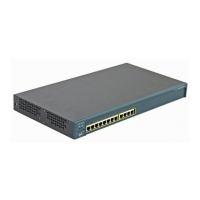
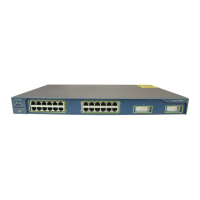
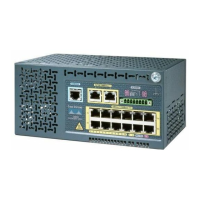




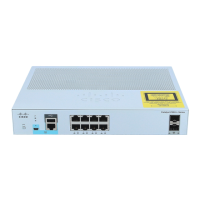

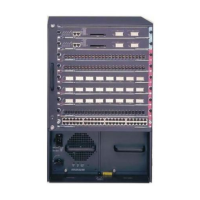
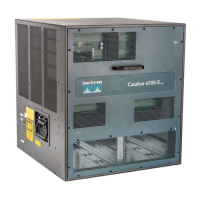
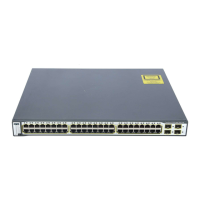
